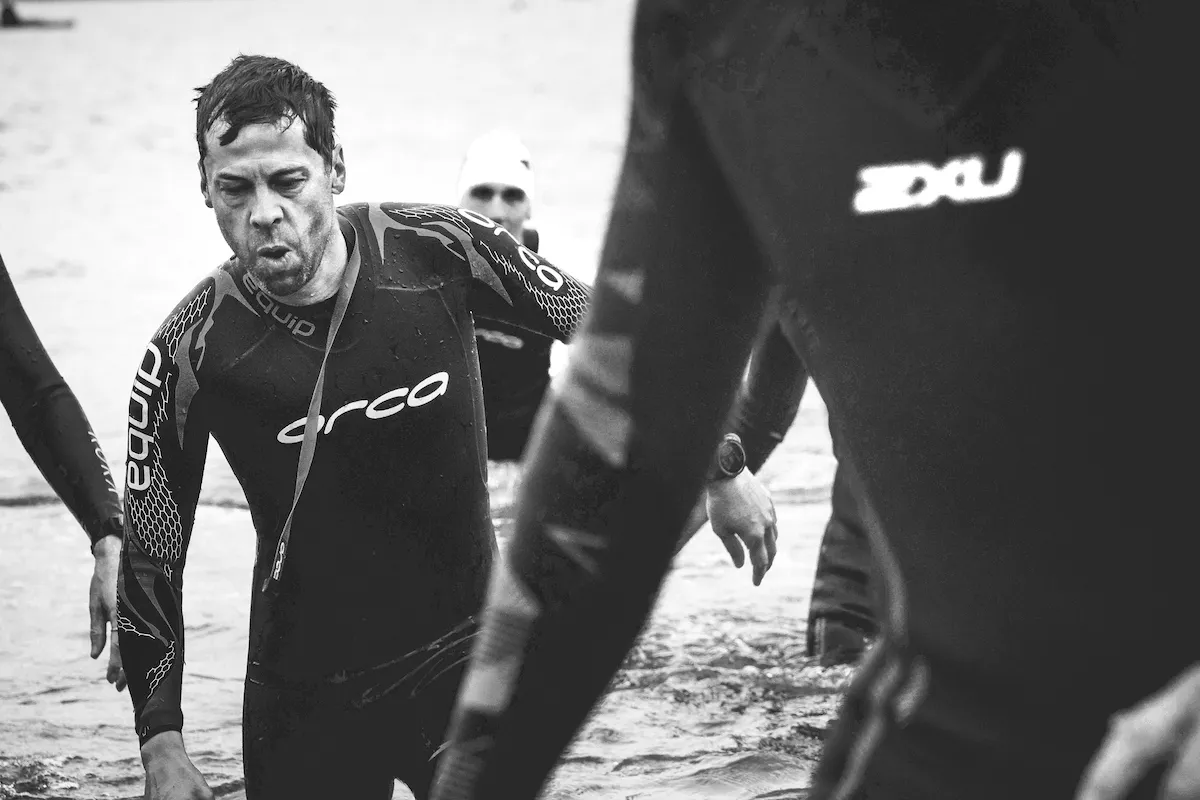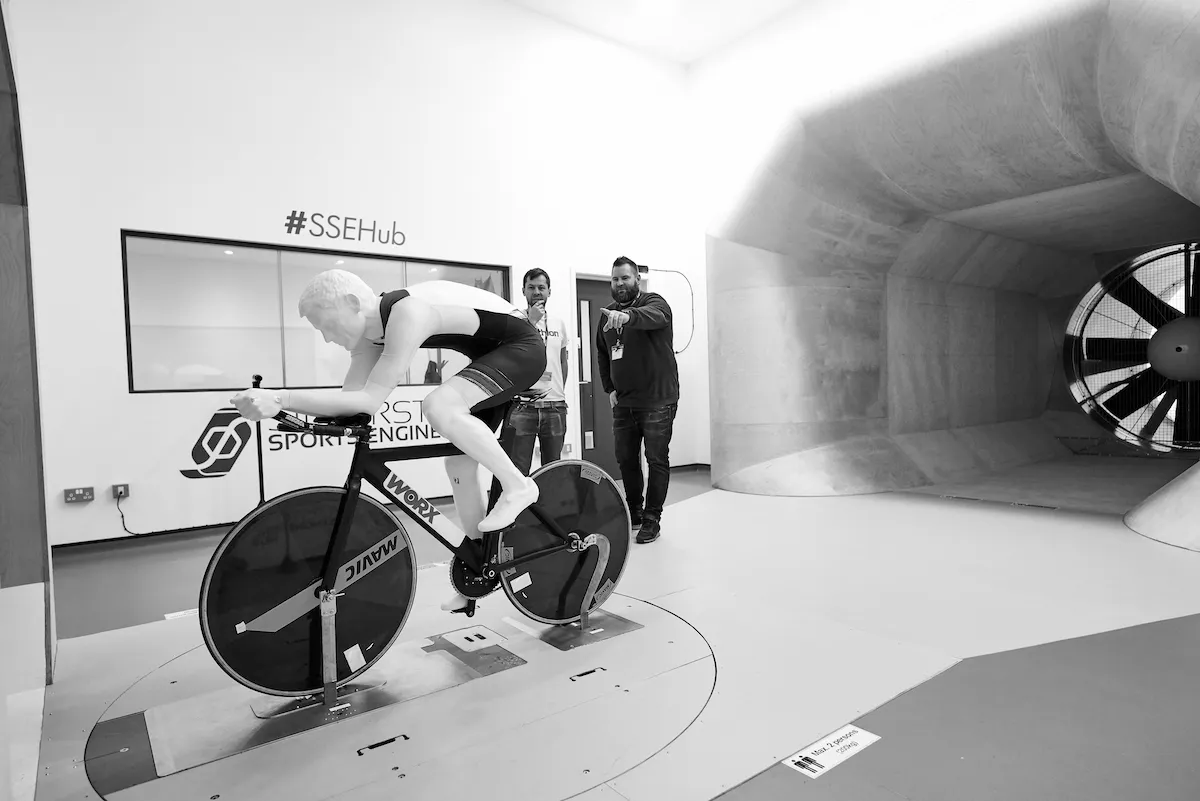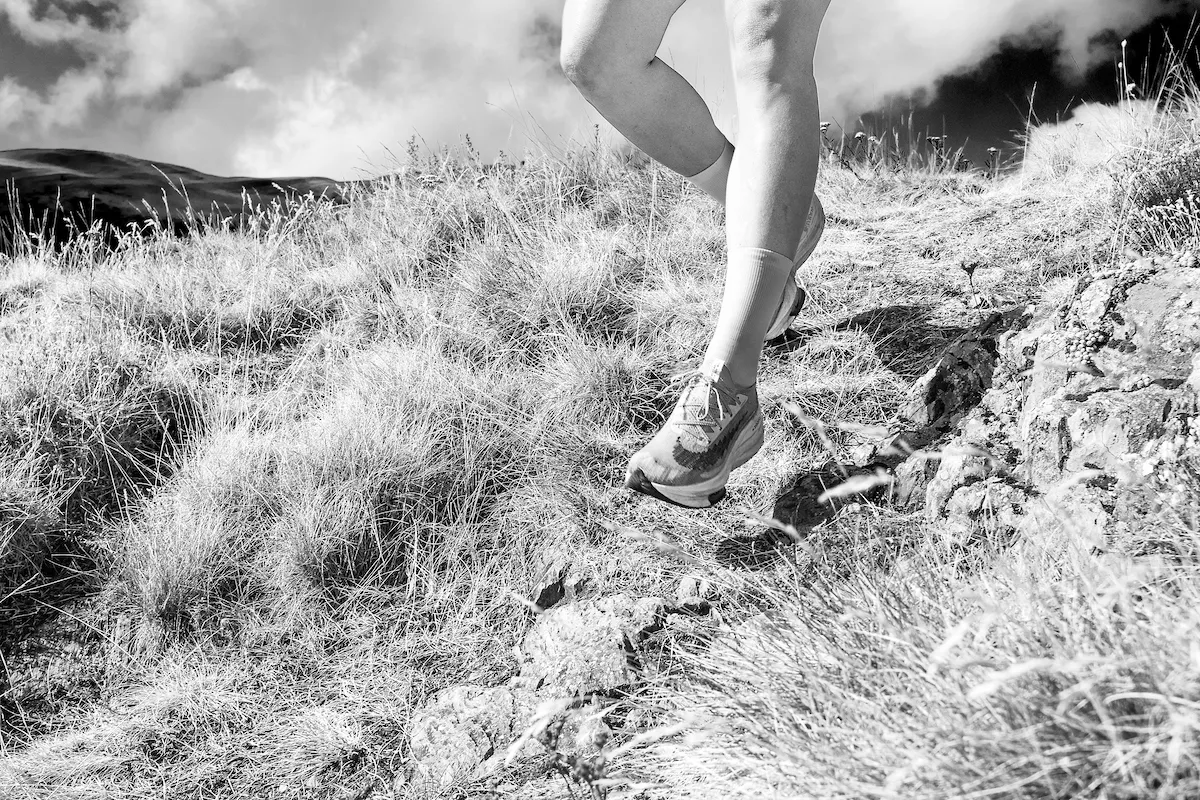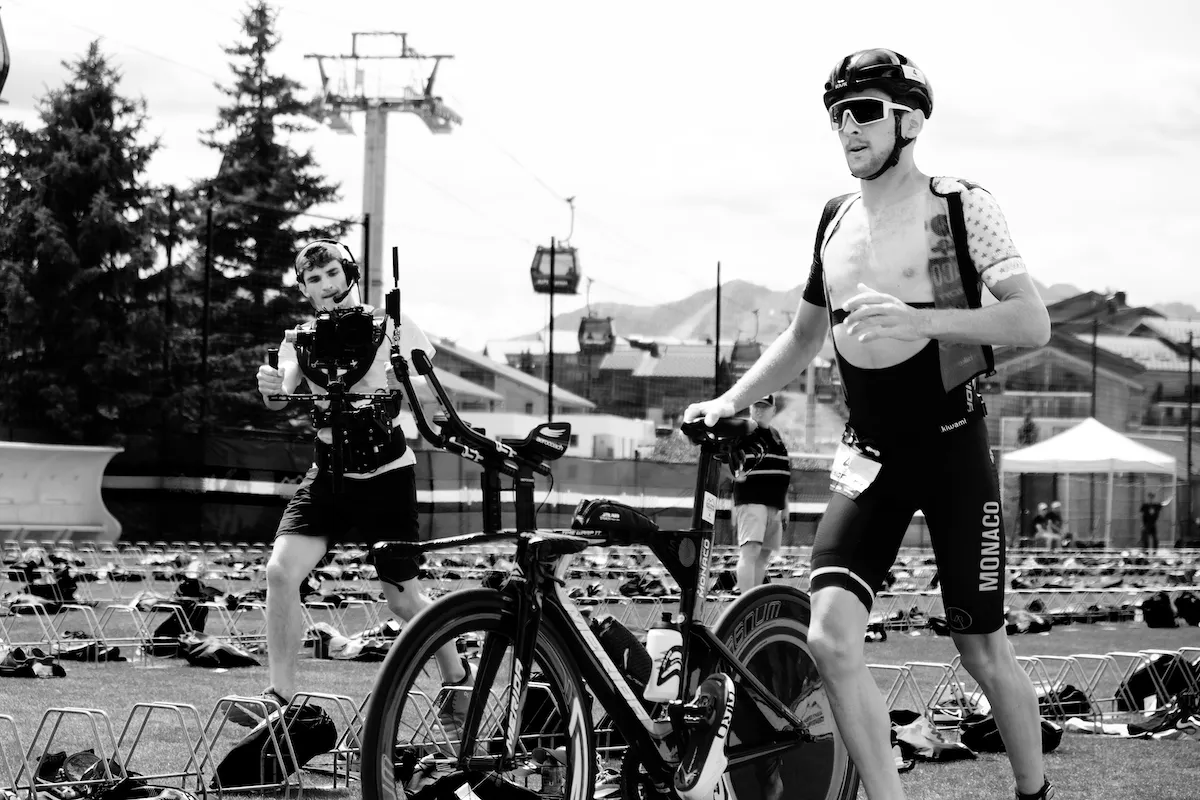Functional threshold ramp tests, Critical Swim Speed calculations, VO2 max number crunching… triathlon can seem a complicated sport.
And while the above can boost a triathlete’s journey to race-day success, sometimes the biggest wins can involve the smallest amount of work. Baby shampoo, nail scissors and mid-race Snickers bars? Count us in!
As our cast of expert coaches, age-groupers and tech gurus below will testify, huge gains can be had with quick and easy ideas.
These can be applied across the swim, bike and run disciplines in both training and racing, the swim-to-bike and bike-to-run transitions (arguably the easiest places to reap the biggest rewards), and in your general lifestyle through nutritional tweaks and balancing multisport with family, friends, work and other things that can provide a hurdle to your race-day desires.
And happily, that pre-race toenail clipping aside, much of what follows involves plenty of fun as well, so prepare yourself for fartleks, finding some new tunes on Spotify and cycling away from your in-laws!
The swim

1. Buy baby shampoo!
“Getting the right pair of goggles is as important as having goggles at all,” says age-grouper Sam Begg. “If your goggles mist up, the anti-fog coating may have worn off.
Baby shampoo works a treat as a replacement – put some on your finger and rub the inside of the lens gently before rinsing with cold clean water.”
2. Head low, swim fast
Keeping your head low on both the swim and bike will have efficiency and aero benefits, respectively. Keep your head low and just out of the water when open-water swimming, especially when breathing, to prevent your body sinking.
Just keep your head high on the run.
3. Save your soles
You know those hotel/spa slippers you feel guilty for wearing just once? Use them for tri! Many walks from transition to the swim start are long and/or on concrete (hello, Windsor and Tenby), but these soft fashion faux pas will make the stroll comfortable.
But remember to give them to a friend before you start swimming!
4. Swim midweek
“Rotational movements from swimming will help strengthen your core and are key for endurance sport success”, says British Triathlon Level 2 coach Chris Knight.
He adds that there are great gains to be made in 30-45min swim sets, especially during the week when they’re easier to fit in than long bike rides.
5. Get a grip
Easy swim tweaks can score big rewards. Grip the water with your entire forearm and hand on the pull of your stroke, don’t breathe behind you, and keep your fingers slightly splayed.
Without getting reported to the lifeguard, also watch the fast-lane swimmers from underwater to check out their tekkers.
6. Follow the bubbles
Drafting on the bike is often outlawed and the gains on the run are miniscule, but you’ll feel the slipstream swim benefits. Find a swimmer who’s slightly faster than you and swim behind them or on their hip.
Follow their bubbles, but remember that repeatedly tapping their toes won’t see you become their new bestie.
7. Sight right
At the Brutal Half last September, I swam 2,400m on the opening leg. Impressive, eh? Not really, as the official distance was 1,900m, my wonky swimming adding 500 unnecessary swim metres into an already-taxing day.
So, practise your sighting ahead of race day, looking up to a marker (i.e. a building, tree or mountain) every 10-12 strokes.
The bike

8. Ride to support your run
“Cycling takes the impact stress out of training, helping you to keep training even after that huge session,” states George Caines, head of education at Wattbike.
“Got some big or hard miles to chew through? Doing some of that on a bike can help speed up recovery and act as a performance leapfrog towards your new PB.”
9. Try a time trial
“If the bike leg of your tri is draft legal then get race practice a local time trial,” says GB age-grouper Mark Jerzak, “or enter some local circuit races or join a chaingang to simulate racing in a bunch.
That real-life experience of feeling like you’re about to be dropped but then (hopefully) hanging on and recovering will serve you well on race day.”
10. Go clipless
The research surprisingly isn’t unequivocal yet but cycling with clipless pedals instead of riding in trainers can result in efficiency gains (especially on hills and at higher cadences), while adding comfort and stability.
Practise unclipping on grass or the turbo first. And if you don’t? No probs, you’ll post the fastest T2 times instead!
11. Take it indoors
“Training indoors is a great tool, as it offers a controllable environment in which you can avoid variables such as traffic lights and busy roads,” says Kate Allan, time-trial cyclist for Team Bottrill.
“And you get ultimate ‘bang for your buck’ on time invested. You can also explore and make use of advanced metrics – for example, drilling down your pedalling effectiveness on the Wattbike.”
12. Hair today, gone…
Think shaving your legs is a step too far? Think again. My Silverstone wind-tunnel testing in 2021 saw me shave 21secs from my 40km TT after shaving my legs.
You could also follow advice from bike designer Mike Burrows who says that the aero ideal is to leave two strips of hair, about 10mm wide, to mix up the air for better flow.
13. DIY dimensions
Professional bike fits are ace, but they can cost £200. For a DIY option, set a saddle height where your knee barely locks out at maximum extension.
To get the most force applied to the pedals, the knee should be above the pedal axle when the crank is in the 3pm position.
14. Tape and tyres
Warren Rossiter has been testing bikes for over 20 years for Cycling Plus. His two ultimate upgrades? Bar tape and tyres.
“Tape is a simple and relatively cheap upgrade, and will make a huge difference to your ride,” says Rossiter. “But the easiest and best improvement you can make to a bike is upgrading its tyres.”
The run

15. Vary your training
“For run training, variety is the spice of life,” says two-time Outlaw Half Holkham top-10 finisher Sam Begg.
“Triathletes can get in the habit of doing the same length or paced runs, and it’s important to change not only distances in training, but also variations in pace, elevation and terrain.”
16. Blaze a trail
“The softer surface of trails can help reduce impact injuries during training runs and is a great way to break up hours of passing pavements,” says Sarah Boyd, product manager at Marathon Tours and Travel.
“Use the weekend to explore trail networks and enjoy rewarding views while racking up the miles.”
17. Go longer… gradually
“Most injuries occur by running too far, too often or too fast, so introduce longer times and distances gradually,” says coach Chris Knight.
“Running off-road uses muscle groups more dynamically than on-road due to the mixture of terrain and elevation, which means your muscles have to work to stabilise as well as move you forwards.”
18. Steady as it goes
“Basing sessions around heart rate and not slaving myself to a set pace is a great way of training,” says GB age-grouper Andy Cooke. “Monitoring my steady-state pace for a given HR when easy running is great for seeing the improvements in fitness levels.
“If I don't see the gains, it's usually a sign I'm overtraining. I also regularly ditch the watch and run on feel.”
19. Be imaginative
“With a busy family life, being imaginative with when, where and how to fit in sessions is key,” adds Cooke, who scored a silver ETU medal at the 2019 Duathlon Champs.
“Utilise the commute to/from work or, if you’re visiting nearby family or friends, ride or run over or back while the rest of the family drives.”
20. Identify your key sets
“Within any block of training I always identify my key sessions before an A-race,” adds Cooke. “For duathlon, this is always at least two race-length-duration run/bike/run sessions where I’d practise fuelling, transitions and race-intensity sections.
"Knowing you have these sessions in the bank is a great confidence booster.”
21. Find the fun
Insert fun into the mix with fartlek, the Swedish word for ‘speed play’ and a form of interval training to boost running (or cycling) speed.
Warm-up for 5mins and then alternate periods of hard and easy running – usually around 30secs to 4mins – or use geographical features as markers, such as a postbox or top of a hill.
Race day

22. Blades of glory
“This may sound weird, but make sure to pack a pair of nail scissors on race day!” laughs Begg.
“Not only can long toenails be a killer during the run, but scissors are also useful for trimming race stickers, snipping gel packets to make them easier to open, and even puncturing holes in numbers to attach to a race belt.”
23. Home learning
“If you can’t ride the race route before the event, get onto Google Streetview so you can visualise the key sections of the course,” adds Begg. “You’ll never miss a turn or come across an unexpected hill again!
24. Have a Plan B
Going to miss your target race time? Adapting your goals mid-race is no shame, so pick a new bullseye. That can be scoring a tri 10km run PB, passing the athlete in the garish tri-suit 200m ahead of you, or just making it down the finishing chute before midday.
You’ve finished the world’s toughest one-day sport, that’s something to celebrate. Don’t let your mind tell you otherwise.
25. Tell your friends
No-one likes a big head is my mum’s sage advice, but telling your friends that you’ve entered a tri will give you accountability in your training and racing.
If they’re nice, they’ll offer you encouragement, act as a sounding board and a way to chart your progress. They might even carry your kit back to transition on the big day. Maybe.
26. Fine-tune your transitions
“Think about how you want transitions to go, and then practise them,” says Kirsty Hillier, head triathlon coach at New Level Coaching (newlevelscoaching.co.uk).
“Write down, visualise, then physically go through each transition. Plan sessions before you race that focus on improving your transitions and gaining free time on race day.”
27. Master the mindset
Experiencing mental pain on race day? Dissociate yourself from the event and imagine that post-race happy place (i.e. the local curry house) to take your mind away from the moment.
Alternatively, associate yourself into the race by breaking down the course into chunks – 90km becomes four bike laps, 5km becomes 5 x 1km runs – to make those distances diminish.
28. Get there early
It sounds boringly obvious but get their early on race day. I’ve personally slept through alarms (ahoy, 70.3 Weymouth) and got stuck in pre-race traffic (hello, Hever), leaving me a stressed, sweaty mess before the race has even begun.
Use that early time to drink a coffee and get to the toilets before the loo roll runs out.
Lifestyle

29. Prioritise your S&C
“Strength training is a vital component often overlooked by triathletes,” believes Mitch Raynsford, performance coach at P3RFORM.
“Focusing on improving the robustness of your lower body can significantly reduce the risk of injury and increase your readiness to train.”
30. The 80:20 rule
If you’re time-short, every session doesn’t need to be at a high intensity. The tendency is to go hard for every workout (often leading to injury), but a rough gauge is to train hard for roughly 20% of your sessions, leaving the other 80% for lower intensity and recovery sets, which has been scientifically proven by Dr Stephen Seiler.
31. Hone your nutrition
“You can have the fanciest nutrition range in your kitchen cupboard, but if you don’t test it all ahead of race day, it can end in disaster,” says Kate Allan.
“Try out everything you intend to use extensively before your event and draw up a race-day strategy so that you know exactly what nutrition you plan to take on, and when.”
32. Avoid bike burps
Want to avoid sick burps on the bike? Then let your stomach settle before fuelling.
“Don’t eat for the first 15/20mins of the ride,” says the ultra-experienced tri coach Mark Kleanthous. “Start hydrating after 5-10mins with water, and then start your nutrition plan.”
33. Know your doses
Your body can absorb around 60g of glucose and 30g of fructose per hour. “Aiming for around 20g of energy every 20mins or 30g every 30mins is a handy way to stay on track,” says nutritionist Will Girling.
Eating a mix of bananas, energy bars and dried fruit will help to maximise this glucose/fructose intake.
34. Pack the treats
Peanut butter and jam sandwiches, flat cola, Snickers bars, jelly babies, bananas… packing your pockets and transition area with treats will provide both a positive energy and mindset boost on race day.
Rennies are another recommendation for long-distance events!
35. Plan your earworms
Getting the pre-ride/run/race earworm right can reduce the perception of exertion by up to 12% according to research from Brunel University.
The optimal beats per minute is in the 135-140 range for maximal work, or close to where you will be riding in terms of revolutions per minute, says the Brunel team. Just avoid any cars playing Nick Cave out the window.
Top image credit: RBCreate
